Abstract
The production, isolation, and characterization of an antibiotic substance from cultures of Pseudomonas fluorescens 2-79 (NRRL B-15132) is described. P. fluorescens 2-79 originally was isolated from the roots of wheat and is suppressive to the wheat root disease take-all caused by Gaeumannomyces graminis var. tritici. The antibiotic was isolated from potato glucose broth cultures of strain 2-79 by solvent extraction. It was purified by silica gel column chromatography and was a greenish yellow, needle-shaped crystal with a melting point of 242 degrees C (decomposition). It was soluble in methylene chloride, chloroform, acetone, 2 N sodium hydroxide, and 2 N hydrochloric acid and was insoluble in water, methanol, ethyl acetate, tetrahydrofuran, diethyl ether, carbon tetrachloride, hexane, and petroleum ether. On the basis of UV, infrared, 1H-nuclear magnetic resonance, 13C-nuclear magnetic resonance, mass spectral analysis, and elemental analysis, the structure of the antibiotic is proposed to be a dimer of phenazine carboxylic acid. Lithium aluminum hydride reduction of the antibiotic yielded hydroxymethyl phenazine as a major product which retained most of the biological characteristics of the parent molecule. There were no toxic symptoms when mice received this antibiotic by oral doses up to 464 mg/kg. The antibiotic showed excellent activity against several species of fungi, including the wheat pathogens Gaeumannomyces graminis var. tritici, Rhizoctonia solani, and Pythium aristosporum; and it may have a role in suppression of take-all in vivo by strain 2-79.
Full text
PDF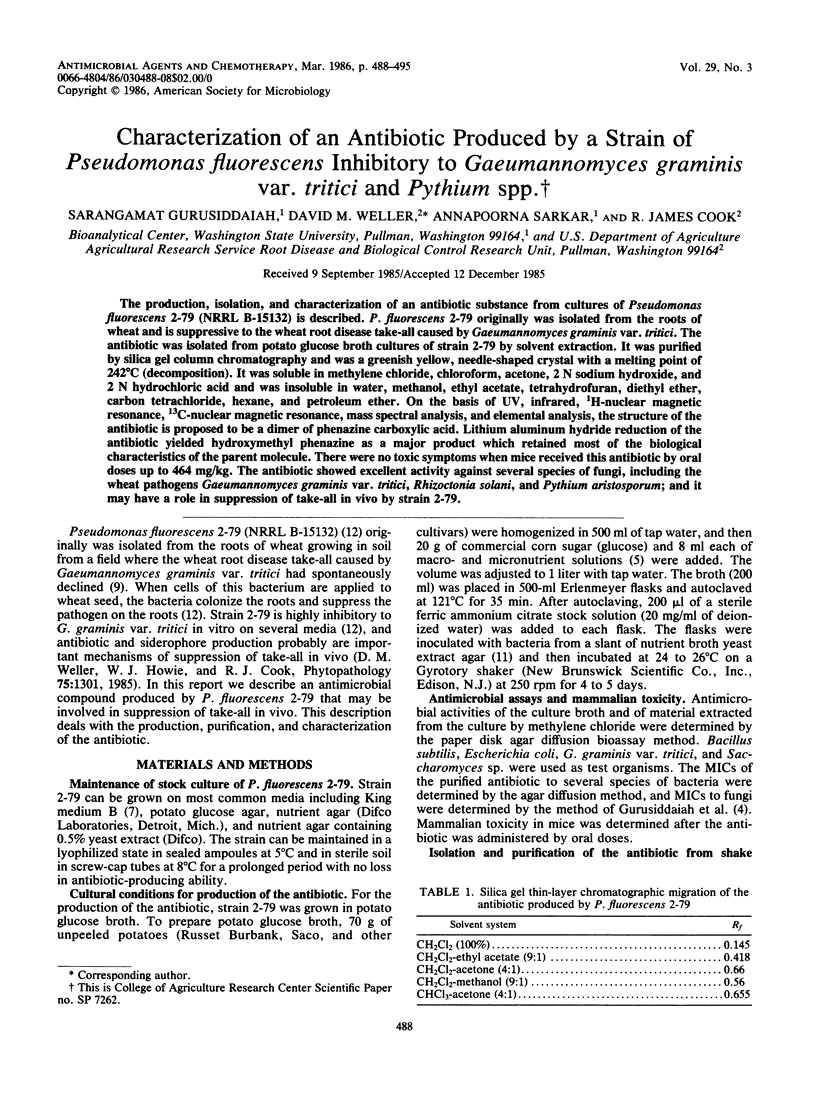
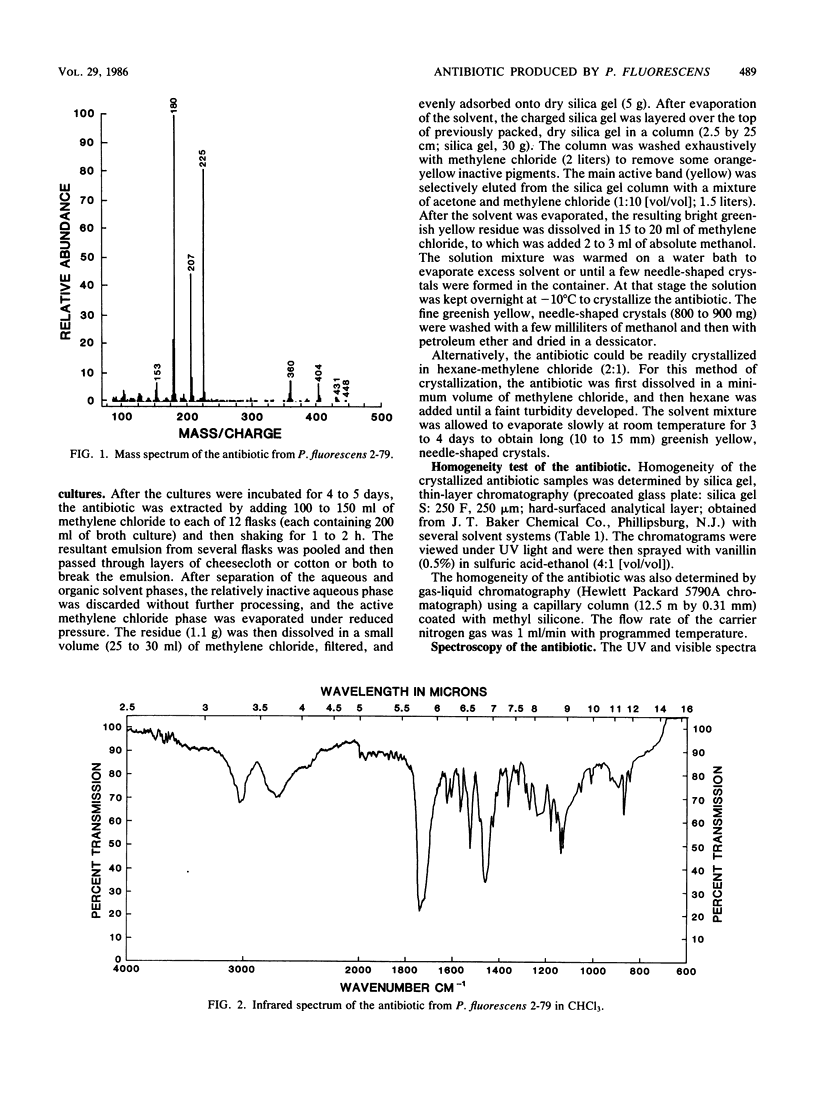
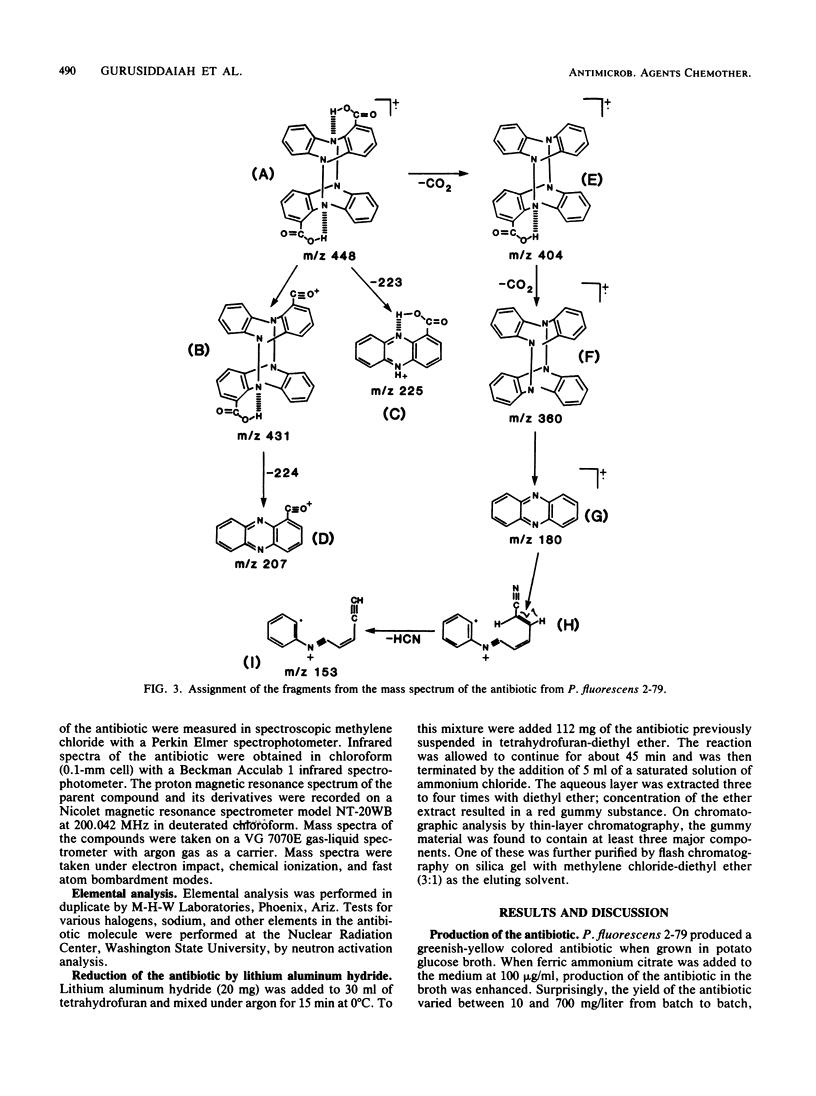
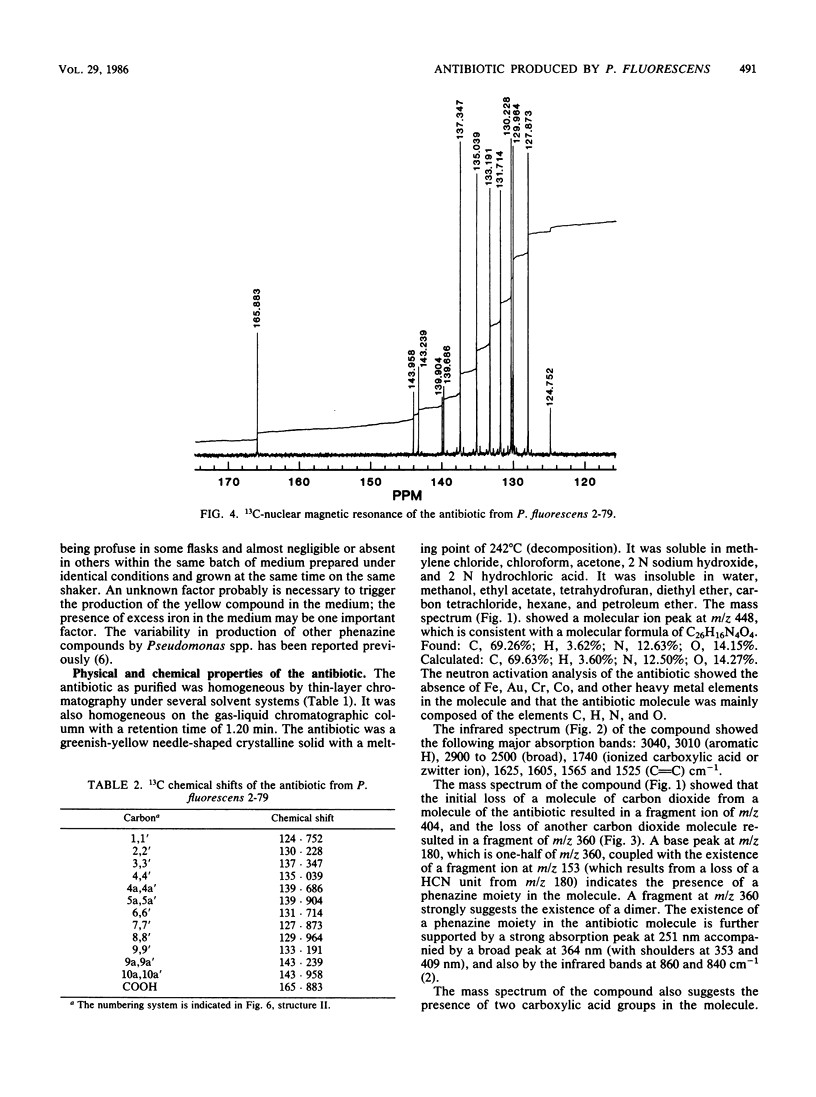
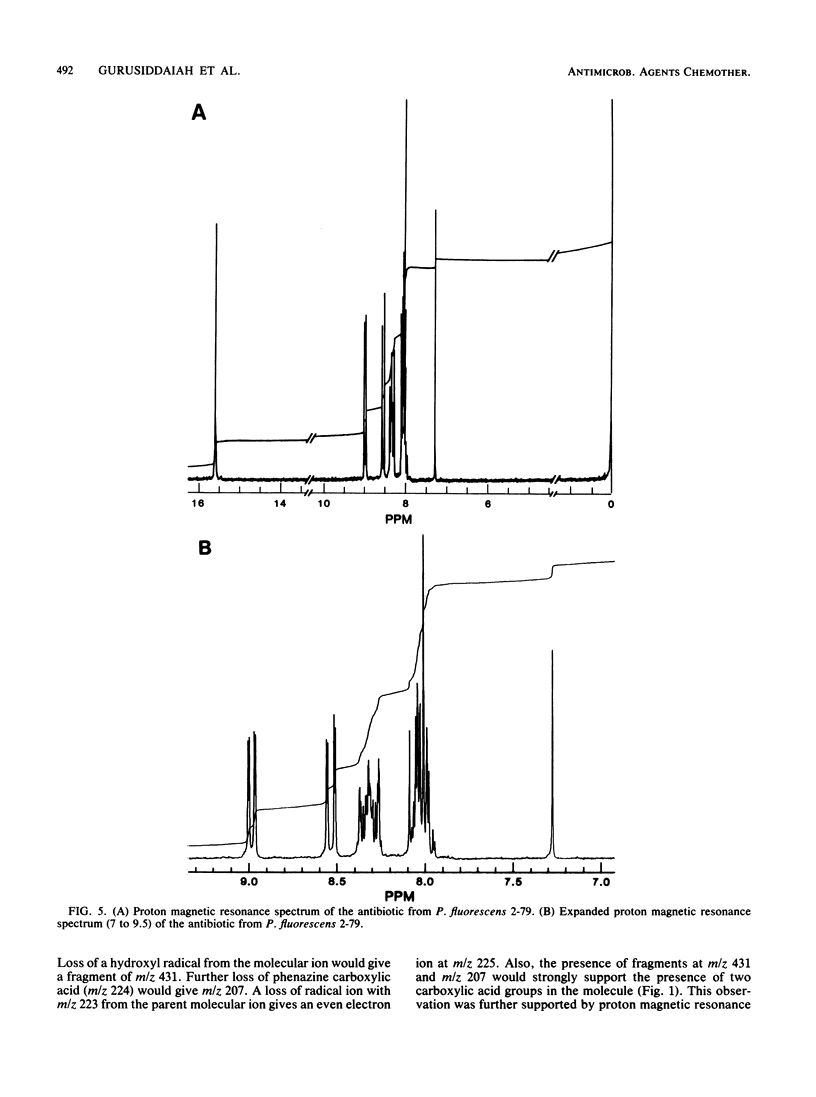
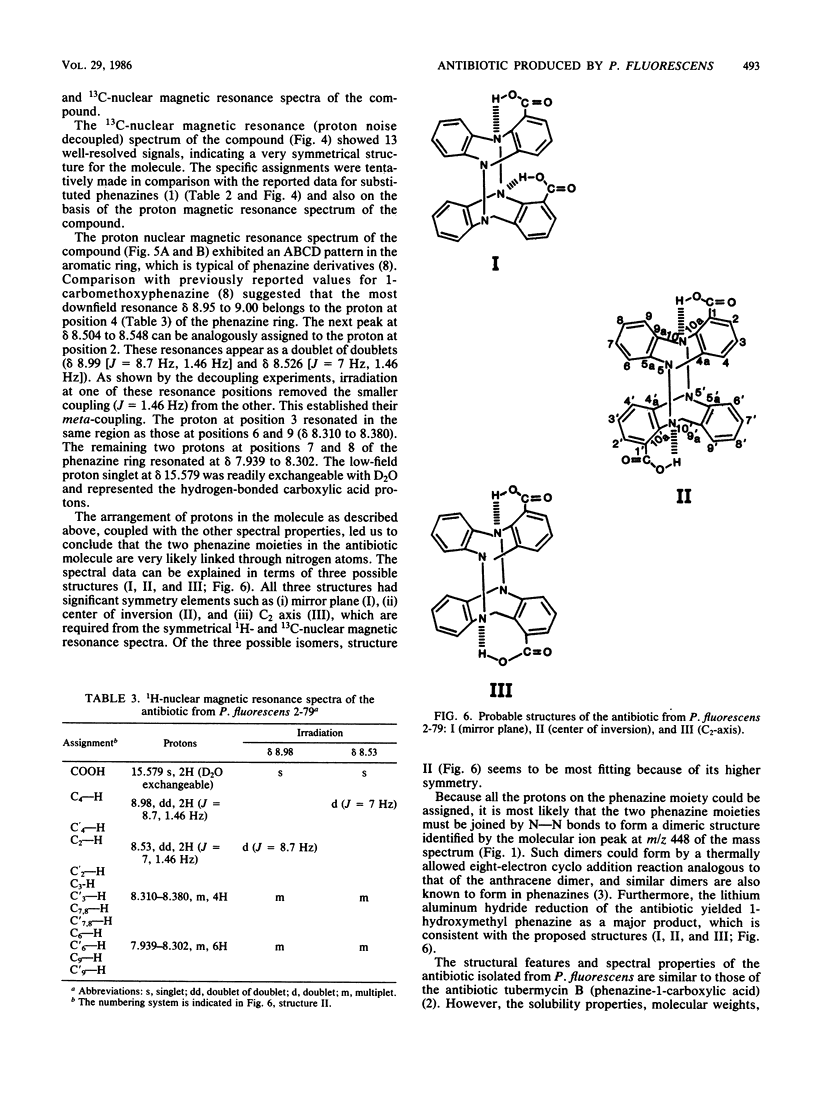
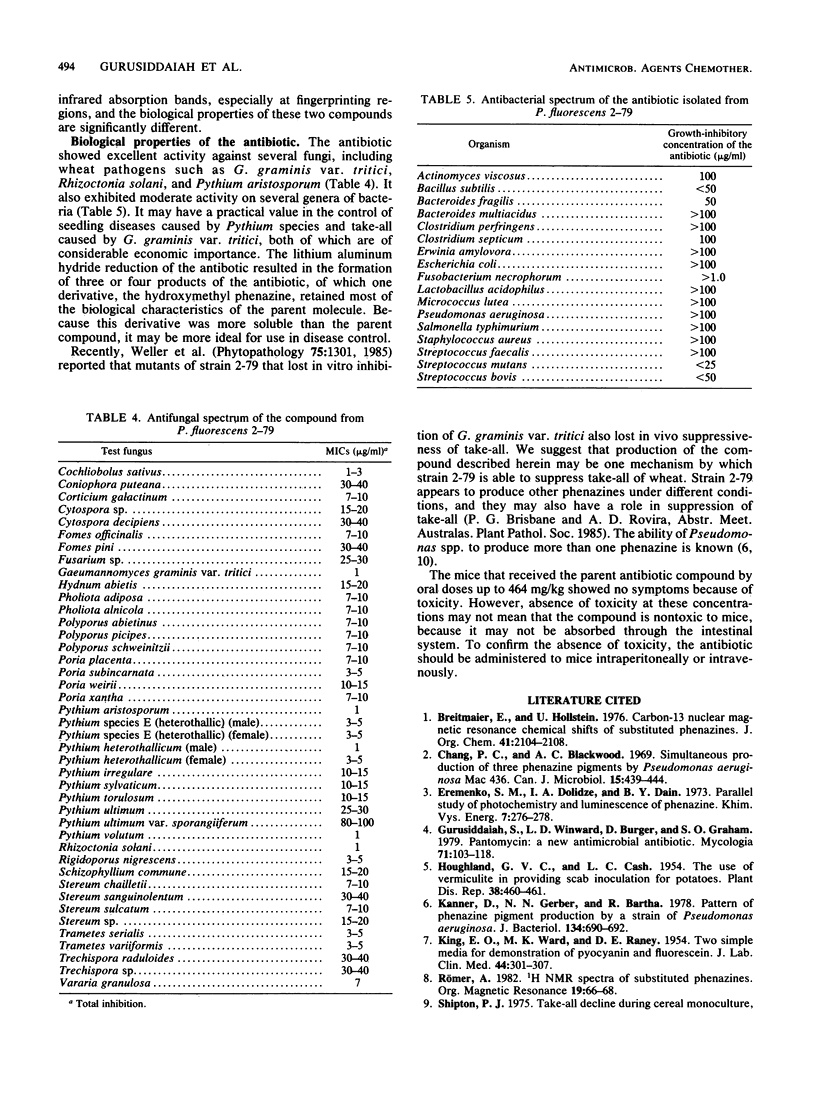
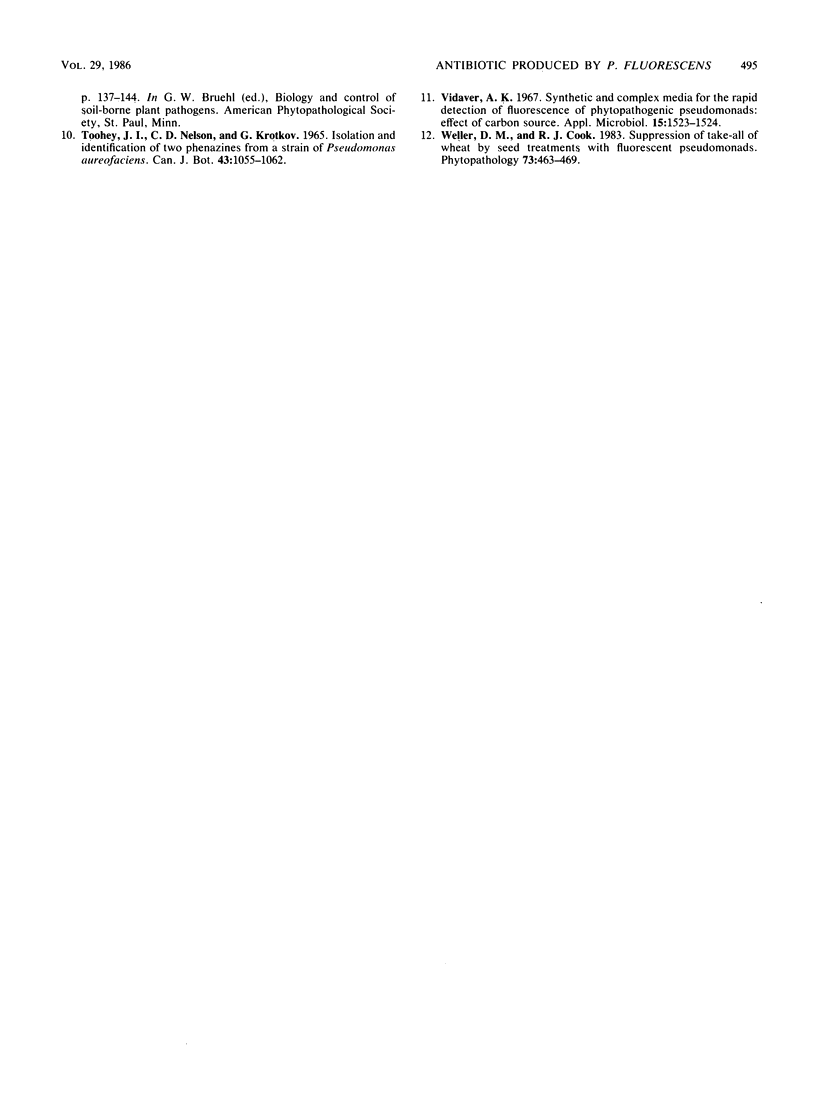
Selected References
These references are in PubMed. This may not be the complete list of references from this article.
- Chang P. C., Blackwood A. C. Simultaneous production of three phenazine pigments by Pseudomonas aeruginosa Mac 436. Can J Microbiol. 1969 May;15(5):439–444. doi: 10.1139/m69-077. [DOI] [PubMed] [Google Scholar]
- Gurusiddaiah S., Winward L. D., Burger D., Graham S. O. Pantomycin: a new antimicrobial antibiotic. Mycologia. 1979 Jan-Feb;71(1):103–118. [PubMed] [Google Scholar]
- KING E. O., WARD M. K., RANEY D. E. Two simple media for the demonstration of pyocyanin and fluorescin. J Lab Clin Med. 1954 Aug;44(2):301–307. [PubMed] [Google Scholar]
- Kanner D., Gerber N. N., Bartha R. Pattern of phenazine pigment production by a strain of Pseudomonas aeruginosa. J Bacteriol. 1978 May;134(2):690–692. doi: 10.1128/jb.134.2.690-692.1978. [DOI] [PMC free article] [PubMed] [Google Scholar]
- Vidaver A. K. Synthetic and complex media for the rapid detection of fluorescence of phytopathogenic pseudomonads: effect of the carbon source. Appl Microbiol. 1967 Nov;15(6):1523–1524. doi: 10.1128/am.15.6.1523-1524.1967. [DOI] [PMC free article] [PubMed] [Google Scholar]


